Philips PUS8079 is currently the cheapest model from the manufacturer, featuring multicolour Ambilight backlighting, which has a large following of fans. Operating on a tight budget for the device, this will certainly be a strength and a significant added value. However, when opting for such a budget, we must also consider some compromises that will be present in all TVs of this class. This television is primarily aimed at people who mainly watch television during the day. Why? The main reason is the contrast results, which, for a VA panel, were extremely low, as well as the television's luminance, hovering around 200 nits. Such brightness indicates that it will not be suitable for content with a wide colour palette, such as streaming platforms with the highest packages. However, it's also worth noting the positive aspects of the TV, as it would be unfair not to mention them. Notably, it has quite high tonal fidelity in materials that significantly exceed the capabilities of the television, as well as smooth gradation. The latter is the strongest point of the tested television, as it is practically hard to fault, and if we were to try, it would border on nitpicking. If we occasionally connect a console, we can expect low input lag, which facilitates comfortable, casual gaming. The contentious issue is the operating system itself. It is extremely simple, and for those who only need YouTube or Netflix, it will be perfectly adequate; however, in any other case, it may prove insufficient. So who is Philips PUS8079 for? Primarily for those looking for something that distinguishes the unit from others in this price range. And that something is certainly Ambilight.
- Matching (Score)
- Our verdict
- TV appearance
- Where to buy
- Contrast and black detail
- HDR effect quality
- Factory color reproduction
- Color reproduction after calibration
- Smoothness of tonal transitions
- Image scaling and smoothness of tonal transitions
- Blur and motion smoothness
- Console compatibility and gaming features
- Input lag
- Compatibility with PC
- Viewing angles
- TV efficiency during daytime
- Details about the matrix
- TV features
- Apps
- Playing files from USB
- Sound
Philips PUS8079 vs XIAOMI A PRO 2026
Direct compare

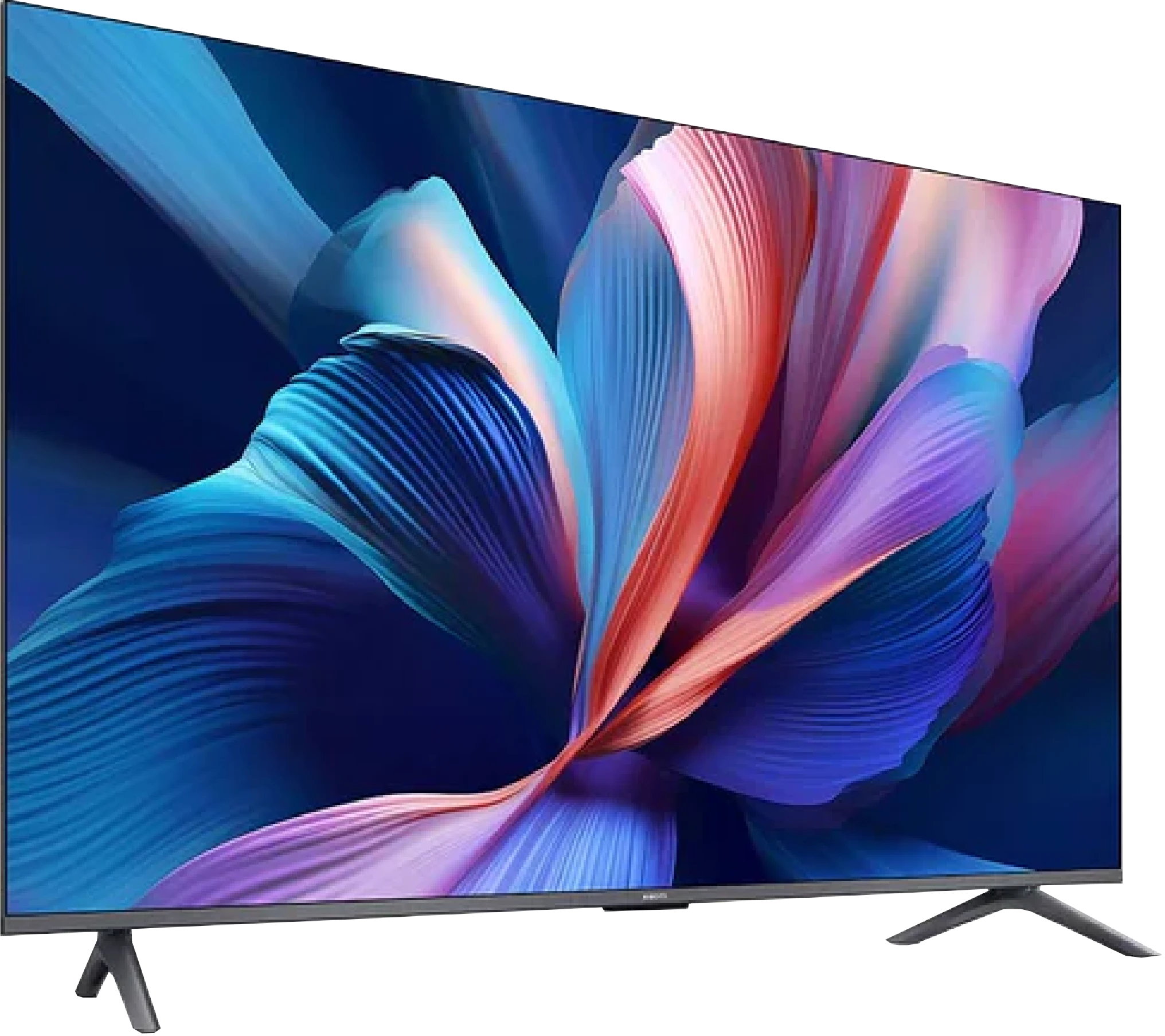
Panel type: LCD VA
Resolution: 3840x2160
System: Titan OS
Model year: 2024
Complete the survey to find out the result

Panel type: LCD VA
Resolution: 3840x2160
System: Google TV
Model year: 2025
Complete the survey to find out the result

Overall rating
4.6
5.6
Movies and series in UHD quality
4.3
6.0
Classic TV, YouTube
4.9
5.7
Sports broadcasts (TV and apps)
4.5
4.7
Gaming on console
6.2
6.2
TV as a computer monitor
2.0
2.0
Watching in bright light
2.6
4.9
Utility functions
4.7
6.1
Apps
6.2
9.6
Sound quality
5.1
5.0
Complete the survey to find out what fits your preferences
Advantages
Unique Ambilight system
Great smoothness of tonal transitions
Low input lag values
Good built-in file player
Support for DTS sound
VA panel with good native contrast and decent blacks
Supports Game Boost mode at 120 Hz in 1080p and 1440p
Low input lag in 120 Hz mode
Google TV – vast selection of apps and services
Wide colour gamut coverage (around 94% DCI-P3)
Good colours after calibration in SDR mode
Supports popular audio formats (Dolby Atmos, DTS:X)
Large, easy-to-read remote with numeric keypad – convenient for seniors
Disadvantages
Low display brightness
No Dolby Vision
IR remote - requires aiming at the screen
TitanOs system - limited number of apps
Low brightness
Lack of real support for HDR10+ and other more advanced HDR formats (e.g., Dolby Vision)
Significant limitations when working with PC – no chroma 4:4:4, heavy dithering, poor font readability
Poor viewing angles (typical for VA)
Clunky build, legs mounted in plastic with screws
Weird system issues – stuttering, errors with Miracast and sound switching
Upscaling and digital image processing is virtually non-existent
Very weak sound, practically no bass (we felt it performed worse than the "2025" model)
Our verdict
Xiaomi A Pro 2026 is a television that, at first glance, doesn’t reveal significant changes compared to its predecessor. Someone might even think it’s just a copy of last year's model with a different sticker. And there’s some truth to that, as the main novelty, or rather the only noticeable difference, is the 120 Hz mode at lower resolutions. It must be said that Xiaomi has done well here; this addition really makes a difference – it’s not a solution for professional gamers, but a nod towards those looking for a smoother image during casual gaming. This is where the A Pro 2026 can stand out – with a simple yet clever idea that sets it apart in the “super budget” segment. Unfortunately, when we start looking at the television more broadly, the enthusiasm quickly wanes. Even though the year has changed on the calendar, most of the issues known from the A Pro 2025 are still with us – the system can still experience strange stutters, and the occasional errors can be quite frustrating. On top of that, there's a lack of any serious digital image processing tools, which worked quite decently last year. As a result, there are many limitations in the design that the competition in a similar price range is already trying to cover up in some way. When it comes to image quality, we won't sugarcoat it either. Brightness at the level of 200–300 nits doesn’t stand a chance against more demanding content. Sure, with simpler streaming content, you can watch something, but with high-budget productions, it’s immediately clear why the television costs what it does. The impression that we are viewing a flat image stripped of details accompanies us pretty much every time. And this brings us to the crux of the matter. The Xiaomi A Pro 2026 is a television for those who really don’t demand much. As a daily screen for series, news, or YouTube, it performs decently, especially thanks to its operating system, which is GoogleTV. Also, if someone is looking for budget equipment and would additionally like a taste of smoother gameplay in games thanks to the 120 Hz mode, they might even be satisfied. However, anyone expecting at least average image quality, a stable system, and proper functionality will soon notice that there are other budget models on the market that simply perform better.
TV appearance





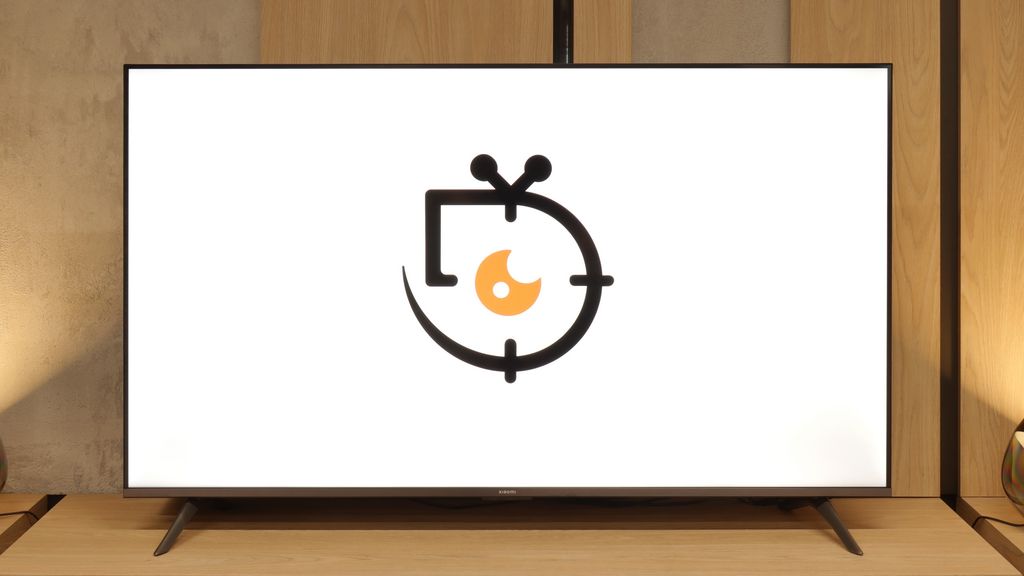
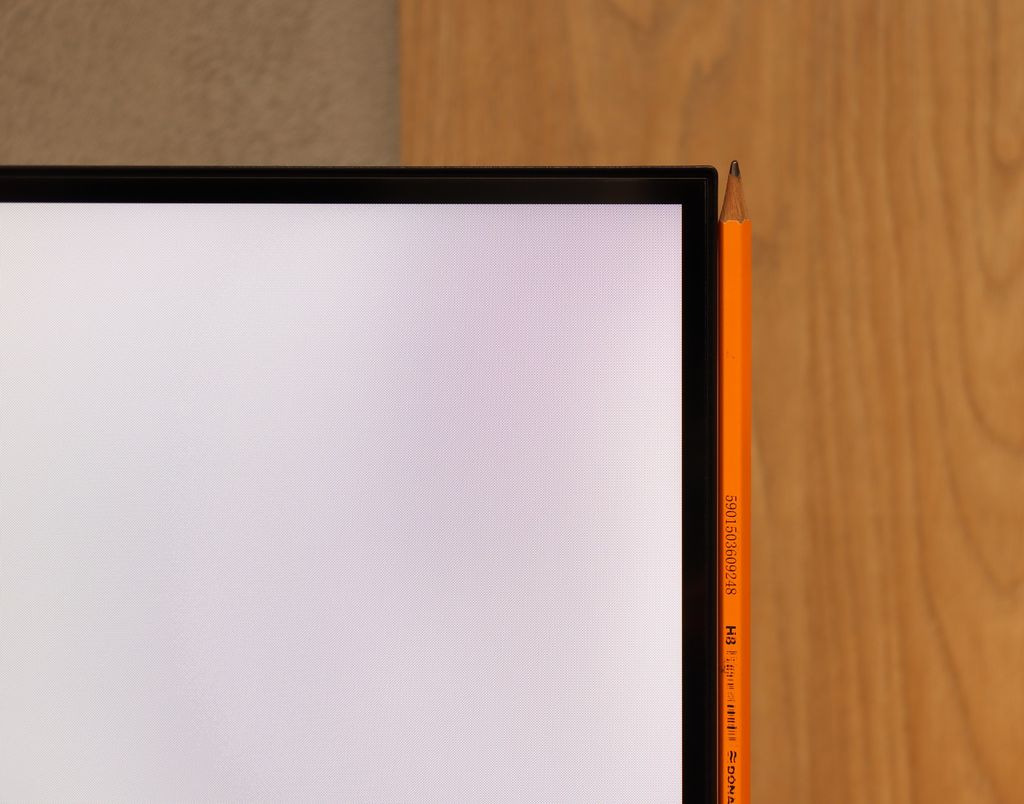
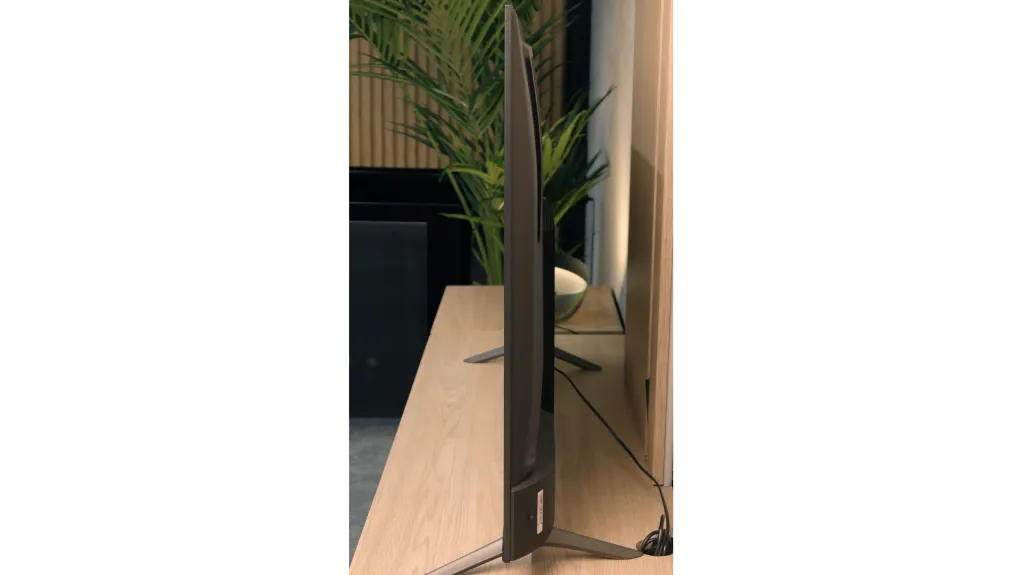
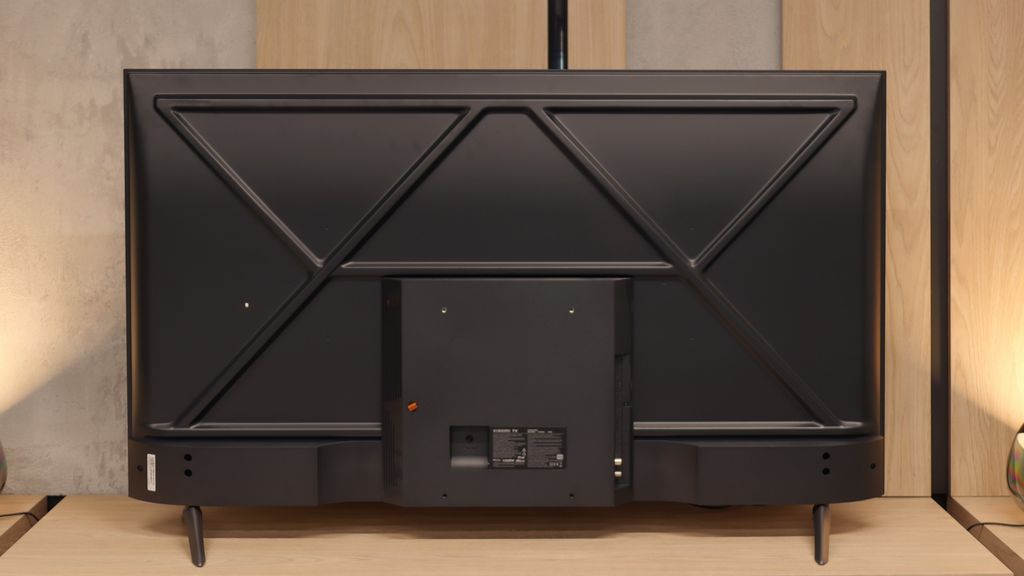
Contrast and black detail
4.3/10
6.1/10
Local dimming function: No
Local dimming function: No
Contrast:

Result
2,750:1

Result
2,550:1

Result
2,150:1

Result
2,350:1

Result
2,350:1

Result
5,000:1

Result
6,550:1

Result
7,300:1

Result
6,600:1

Result
4,900:1
Halo effect and black detail visibility:


The Philips PUS8079 television is equipped with a VA panel. It’s worth noting that the size we tested is 43", as this manufacturer often changes panels depending on the size. While this type of panel should provide at least decent blacks, since we are dealing with a very budget unit, the results are rather predictable. Results around 2300:1 are among the lowest for this type of panel. More advanced units achieve results 2-3 times better in this regard. However, the current state of affairs shouldn't overly surprise us, as we are dealing with a very, very budget device. We should also mention that in this case, we have direct backlighting (Direct), the only plus of which is the uniformity of lighting. Unfortunately, it has not been divided into any zones, which is not surprising given the low class of the device. On the positive side, we can note the light separation in the test from the movie "Oblivion".
One of the biggest advantages of even a budget construction like the Xiaomi A Pro 2026 is the VA panel it uses. This is responsible for quite decent contrast, which in our measurements oscillated between 5000:1 and 7000:1. On the screen, this translates to a stable image with fairly deep blacks – something that's hard to find in competing models with IPS panels without local dimming. Xiaomi has also added a global dimming function for the entire panel. It sounds good, but… we advise turning it off straight away. Why? Because the screen behaves very strangely in darker scenes – sometimes it dims so much that you can hardly see anything, and other times it brightens so much that the already dark blue-black turns into a bright blue. At those moments, it felt as if the TV was simply damaged. Fortunately, without this function, the contrast looks really solid. It’s definitely not on the level of advanced TVs with local dimming, but in its price range, it will easily satisfy most users – especially if you’re not watching in a completely dark room and have at least some background light that effectively masks the imperfections of the "blue-black".
HDR effect quality
2.9/10
4.1/10
Luminance measurements in HDR:

Result
179 nit

Result
177 nit

Result
202 nit

Result
164 nit

Result
193 nit

Result
220 nit

Result
248 nit

Result
322 nit

Result
315 nit

Result
326 nit
Scene from the movie “Pan” (about 2800 nits)


Scene from the movie “Billy Lynn” (about 1100 nits)


Static HDR10


Dynamic: HDR10+
Dynamic: HDR10+


HDR luminance chart:
XIAOMI A PRO 2026
HDR luminance
Philips PUS8079
HDR luminance
The maximum brightness in content with a wide tonal range at 202 nits is extremely low and practically prevents watching movies and series on streaming platforms in the highest quality. It's worth mentioning that in this case, using the HDR format equipped with dynamic metadata won't help either. Why won't it help? Because the only such format implemented in the television is HDR10+, which is extremely unpopular, and films recorded in this format are scarce. It’s also worth noting that PUS8079 uses WLED backlighting, which unfortunately is not the best solution, resulting in coverage of only 80% of the wide DCI-P3 colour gamut. The effect of this reality is significantly less intense colours in HDR content.
If you're counting on the cinematic HDR experience in the new Xiaomi A Pro 2026, it's best to temper your expectations. This TV is simply too dim to fully realise the potential of contemporary films or series designed for the highest quality image. Our measurements showed brightness levels in the range of 200–300 nits, which are values that are more suited to SDR content than to ambitious HDR productions. In practice, this means that while most films look decent, they certainly won't evoke the 'wow' effect that other TVs do. Fortunately, not everything is lost – credit has to be given to the PFS LED filter used here, a solution similar to the quantum dot technology found in QLEDs. Thanks to this, the coverage of the DCI-P3 colour palette reaches about 94%, resulting in vibrant, saturated colours in the vast majority of materials.
Factory color reproduction
1.8/10
3.5/10


Factory Mode
After calibration


Factory Mode
After calibration
The best factory mode in terms of colour reproduction and fidelity to the director's vision was "Film". While it was the best of the predefined modes, it still had significant discrepancies between what the filmmaker wanted to convey and what the tested television displayed. In both SDR and HDR materials (though to a lesser extent in the latter), the white balance, which is the most fundamental element responsible for image purity, turned out to be somewhat of a repeat of the vibrant mode, with a blue tint reminiscent of what you see in retail displays. Moving directly to the SDR materials and what affects contrast, namely gamma, we see it being severely reduced. This leads to cutting off already minimal contrast resources and brightening the entire image. In the EOTF curve, responsible for the increase in brightness pace in HDR materials, we instead see a strong drop below the reference line, which, given the limited light output of the television, significantly impacted the perception of those contents, which were even more dimmed. We won’t separate the quality assessments of the colours themselves since, in both cases, they achieved astronomical deltaE values, being simply completely different from what they should be.
What we saw in Filmmaker mode really surprised us – and unfortunately not in a good way. The mode advertised as the Hollywood standard resembled more of a display in a shop window. The white balance was shifted towards blue, which led to massive colour errors and the effect of blown-out scenes in SDR content. It was a bit better, though far from perfect, in HDR materials. There were also problems there – colour saturation and the entire palette consistently drifted towards cooler tones, resulting in an image that had an artificial, cold tint rather than a cinematic character. In other words: even in Filmmaker mode, which should be the showcase of this television, we got an effect far from expectations.
Color reproduction after calibration
4.8/10
7/10




Luckily, Philips implements advanced image correction tools in all of its TVs. SDR content has benefited the most here, and the huge deltaE errors have been significantly corrected, with both white balance and gamma being substantially reworked. While we can't say it's reference-quality image, it's definitely better, and you can watch a movie or series without causing a headache, especially for your eyes. Naturally, HDR materials, due to the very low luminance of the TV, could not be corrected to the same high degree as those with a standard colour palette, but we managed to roughly straighten out the EOTF curve and the white balance. Unfortunately, that was all we could squeeze out of our unit, although it's worth noting that each unit is different and has entirely different errors, whether minor or major.
Even though Xiaomi isn't a brand associated with top-tier televisions, it's fair to say that even in a budget model like the A Pro 2026, the manufacturer left plenty of calibration settings. After a few adjustments, the SDR picture took on a completely new look. The colours stopped veering into blue tones, the whites gained a sense of naturalness, and most errors dropped to a practically invisible level. As a result, SDR content looked very good, surprisingly so for this price range.
It was a slightly different story with HDR materials. Here, it was immediately noticeable what we had already mentioned – the overexposure of bright scenes and issues with balance control. Calibration helped only partially, as the limitations of the panel itself were at play. However, it must be emphasized that in the case of SDR, the television changed beyond recognition, and definitely for the better.
Smoothness of tonal transitions
7.5/10
9.3/10












It seems that the fluidity of tonal transitions will be the biggest plus of the tested television. Practically in every scene, they were at a very satisfactory level. The only moments where it is insufficient are around the blacks, but even in these areas, it is quite good, and overall it can still be rated very positively, especially considering the price of the tested device. A matter not related to the fluidity of tonal transitions, but well visible in the photos, is the noticeable backlight bleed in the corners. This is an issue with the artwork itself, but it's worth noting that these cheaper units may be more prone to visible effects.
The television really handles colour blending well, and in most scenes it's hard to spot any imperfections. This is best showcased in the brighter parts of films, where tonal transitions look almost perfect, and the image is smooth and natural. Darker scenes are somewhat less impressive, where the characteristic banding can be seen. Fortunately, this isn't a flaw that stands out, and for most viewers, it will remain virtually unnoticeable.
Image scaling and smoothness of tonal transitions
6.3/10
3/10
Smooth transition function

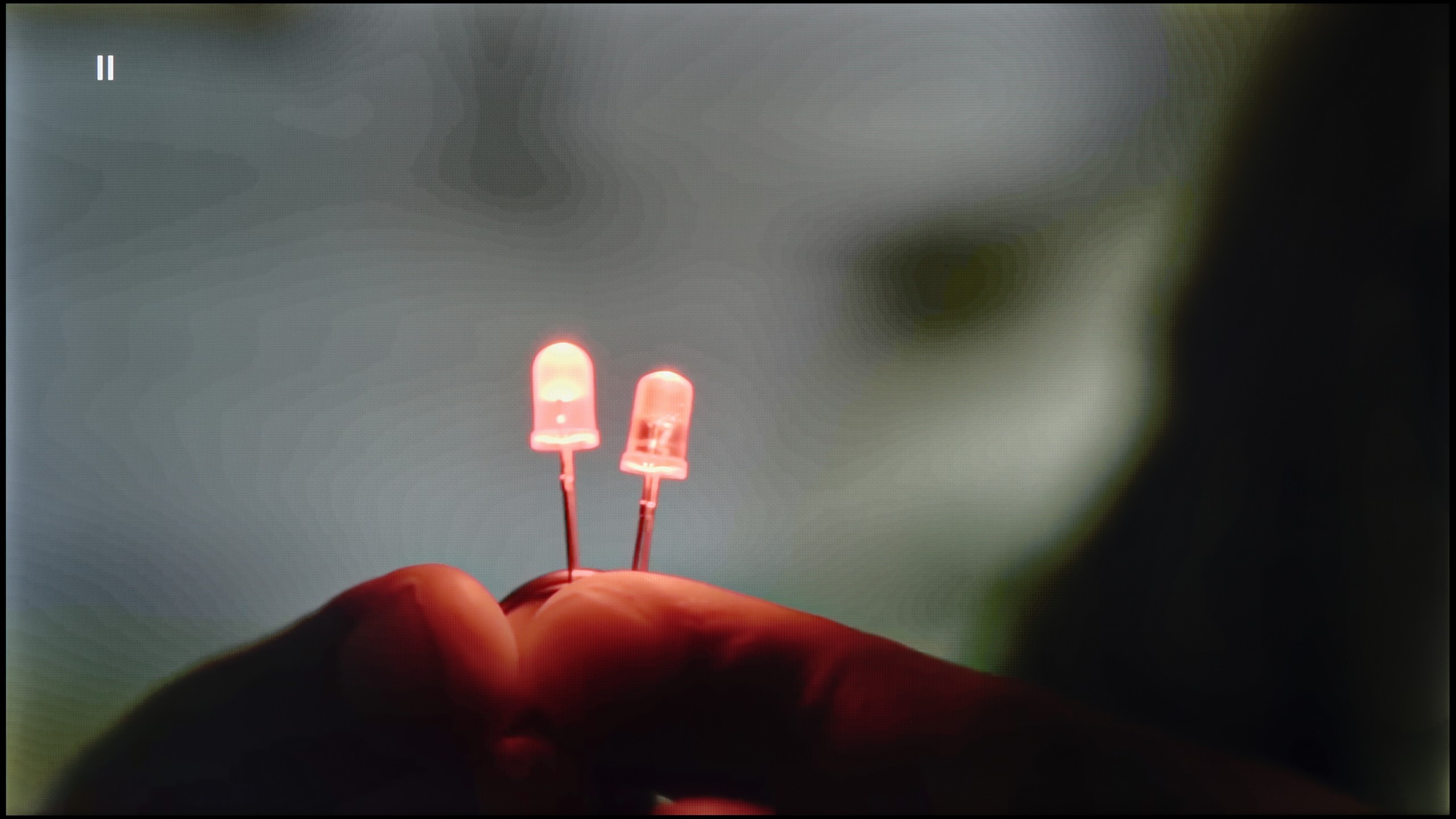
Image without overscan on the SD signal


We will return once again to the issue of tonal transitions, but in the context of overall image quality improvement. As we can observe in the photo on the left, the gradation enhancement feature works brilliantly. Furthermore, it offers several settings, and each of them, even the lowest, provides a beneficial effect, and, what’s more, does not soften the film grain effect. We will repeat once again that this feature is the biggest advantage of the tested television.
Secondly, we will look at image scaling. Here, the tested television performed worse. We can notice, above all, the strongly jagged fine details and the characteristic white glow around figures. We must not forget about the significant artificial sharpening of the image.
Upscaling and digital image processing in the Xiaomi A Pro 2026 are not among the model's strong points. One might expect that since the television was not designed to achieve record brightness levels, the manufacturer would have opted for a more robust processor and a set of features that would "enhance" lower quality images. Unfortunately – we were also met with significant disappointment here. On the plus side, it has reasonably decent upscaling, which handles HD content and boosts it to 4K in an acceptable manner. However, that is where the list of advantages ends. The television does not offer any features to improve tonal transitions or smooth out digital imperfections, so in most cases, we receive a raw image, exactly as we deliver it from an external source. On a large screen, this lack of support makes lower quality content look simply bland. An additional problem is the phenomenon of overscan. When watching older material, it happens that part of the image is cut off, which only intensifies the impression that Xiaomi has quite a bit of catching up to do in this category.
Blur and motion smoothness
4.2/10
4.5/10

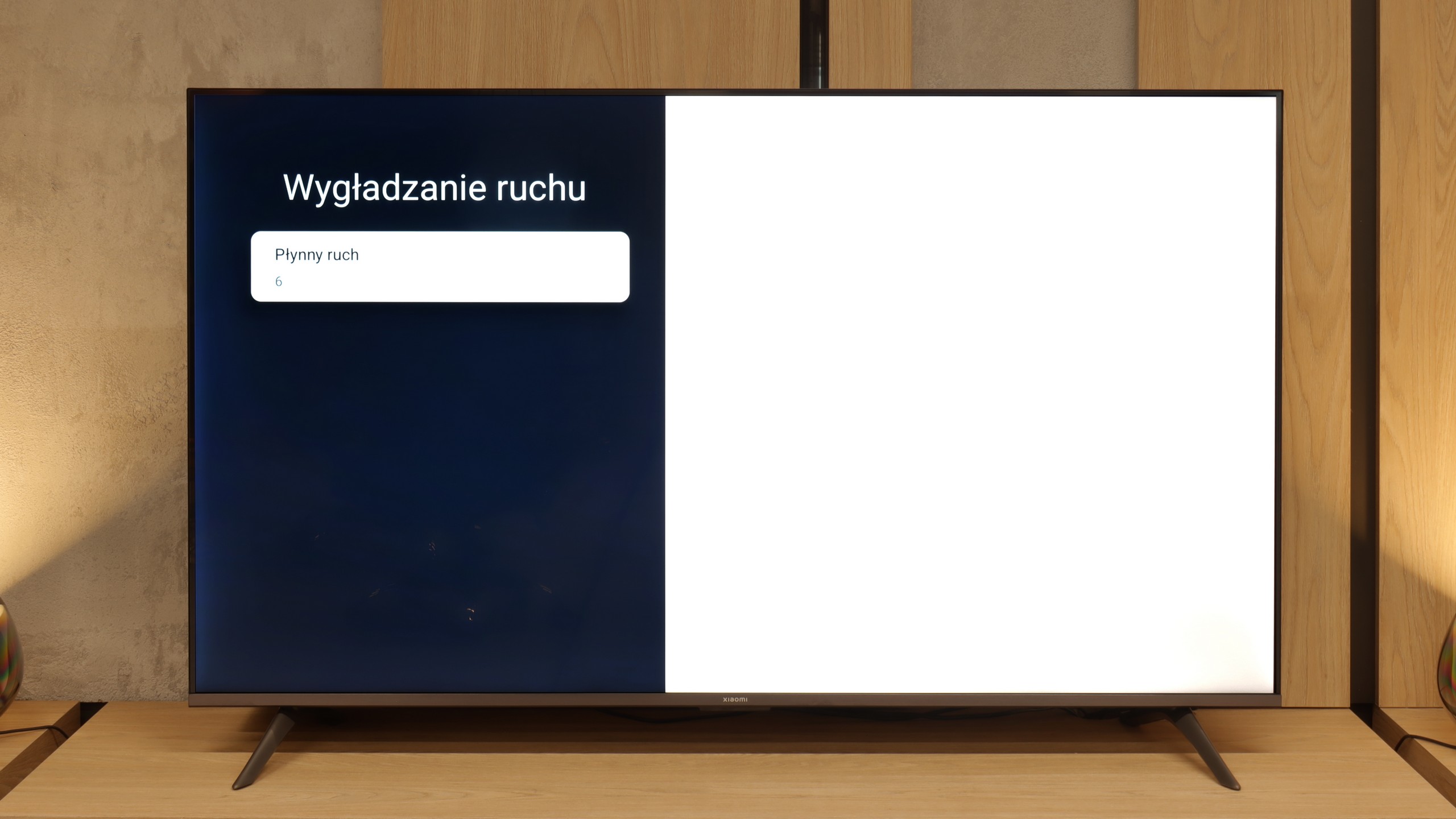
Blur (native resolution, maximum refresh rate):






Blur (BFI function enabled):



Smużenie ():
Smużenie (1440p@120Hz):



This paragraph, unlike the others, will be extremely short. The reason for this situation is the lack of implementation of even the most basic motion smoothing function, which was to be expected given the price of the device. We also note that we are dealing with a VA panel, whose sharpness will not be the best under the sun. This type of panel is mainly associated with high contrast, which goes hand in hand with a relatively slow response time, as we can clearly read from the panel analysis results. As you can see, from the images captured in quick motion, the picture is blurred, typical for this type of panel. Although it may not be the ideal option, it can conditionally be used for watching sports, although one must keep in mind the less than optimal sharpness in motion. It's worth mentioning that movies will exhibit stuttering, as the television does not have any, not even the simplest, motion smoother.
The motion fluidity in the Xiaomi A Pro 2026 is an interesting compromise that results from the hybrid matrix used here. At a native resolution of 4K, the maximum refresh rate is 60 Hz – sufficient for those who mainly watch movies and series. It is with them in mind that the manufacturer added a motion smoother, allowing users to adjust the image to their own preferences – one can opt for greater fluidity or leave it with more "cinematic" frames depending on the settings.
Console compatibility and gaming features
4.7/10
3.6/10
- ALLM
- VRR
- VRR range48 - 60Hz
- Dolby Vision Game Mode
- Correct implementation of HGIG
- 1080p@120Hz
- 1440p@120Hz
- 4K@120Hz
- Game bar

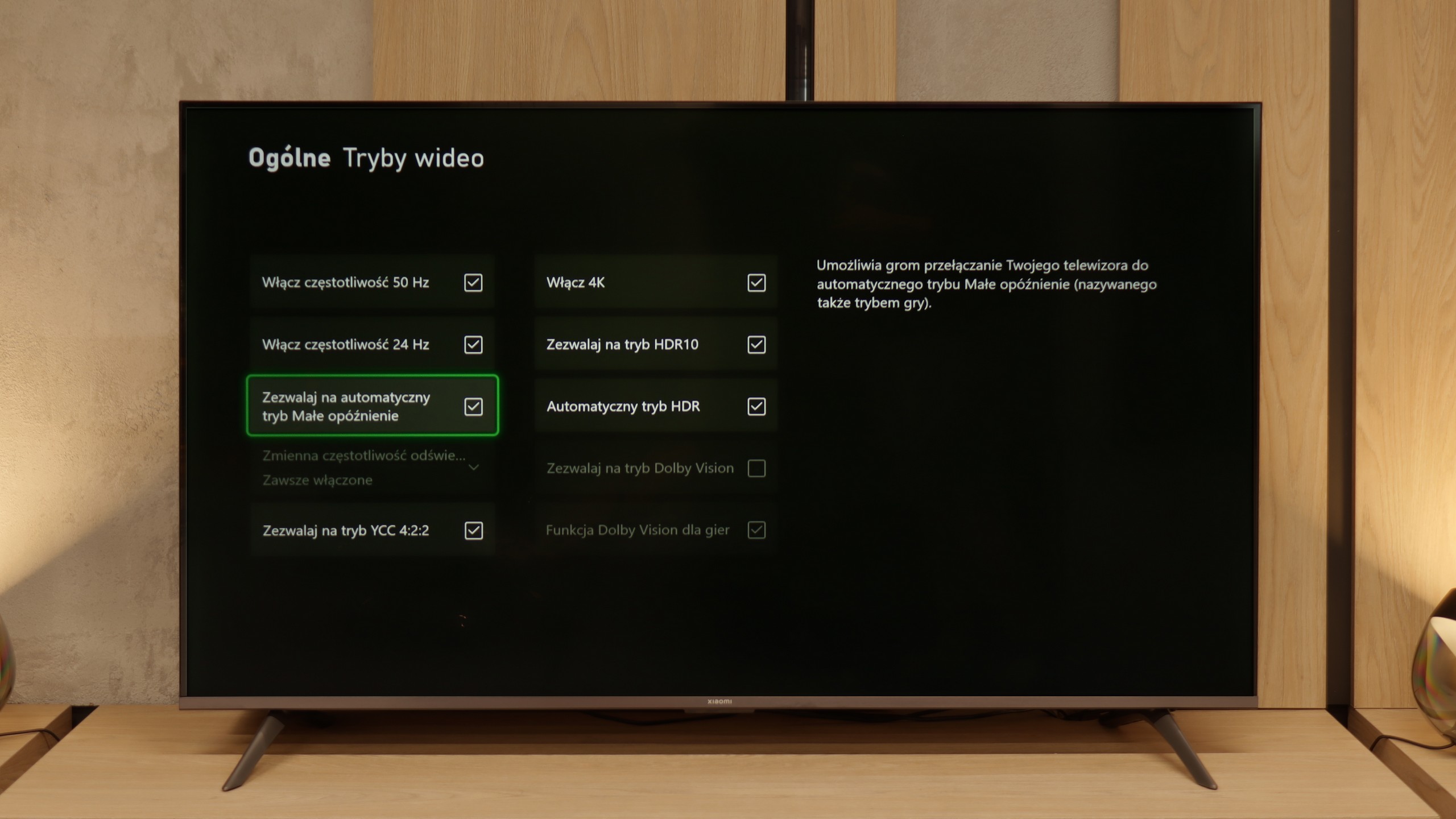

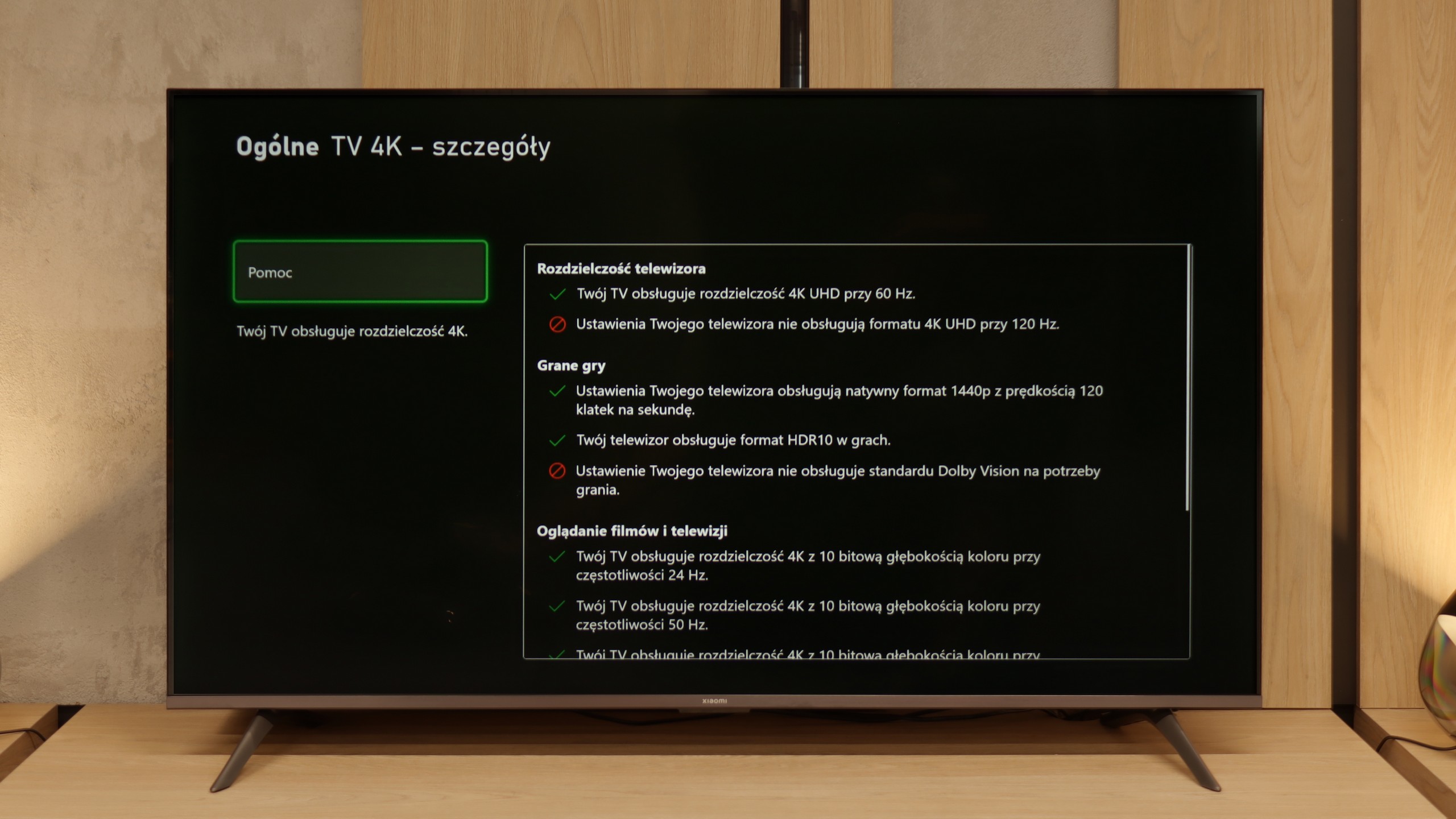

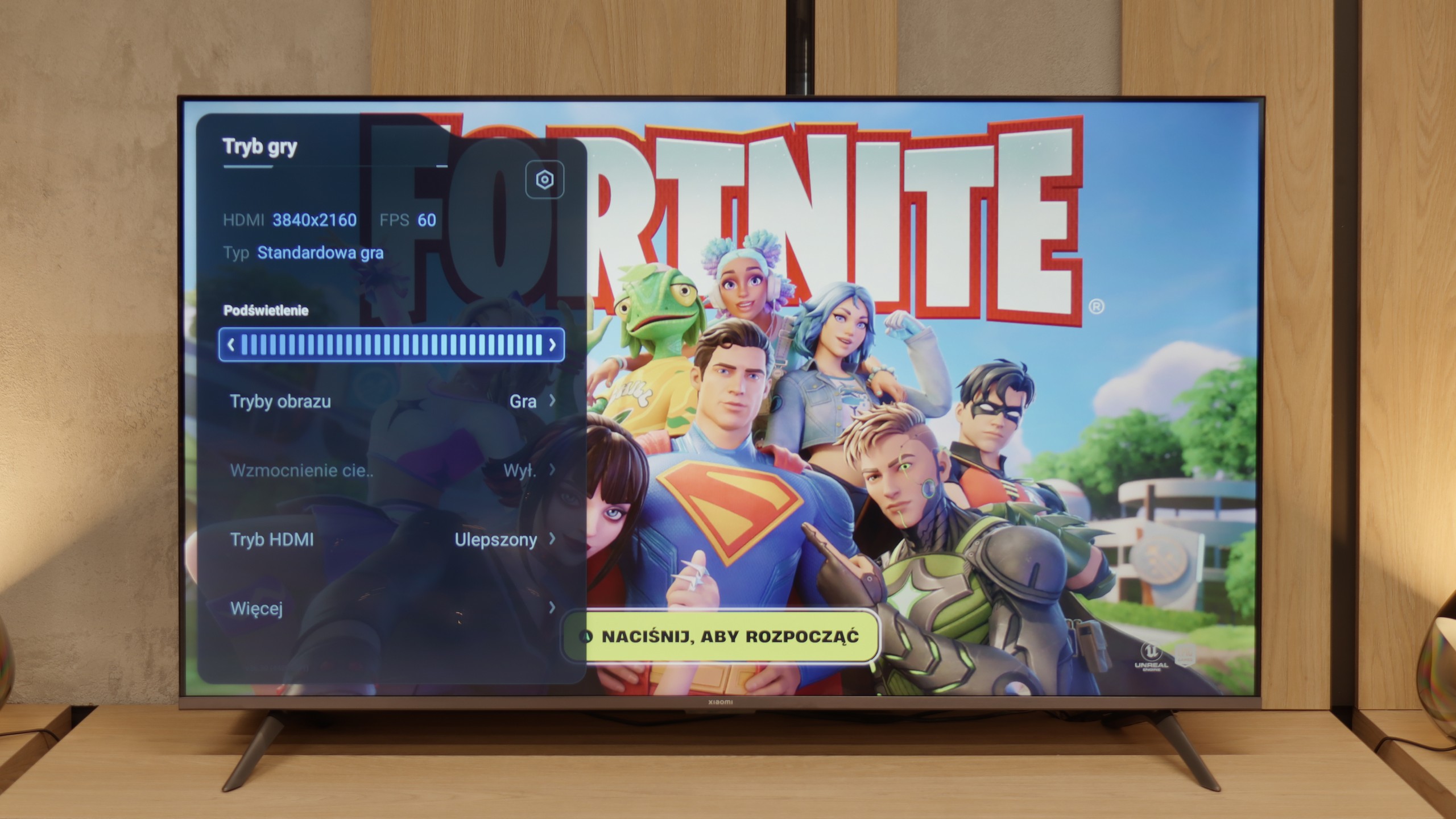

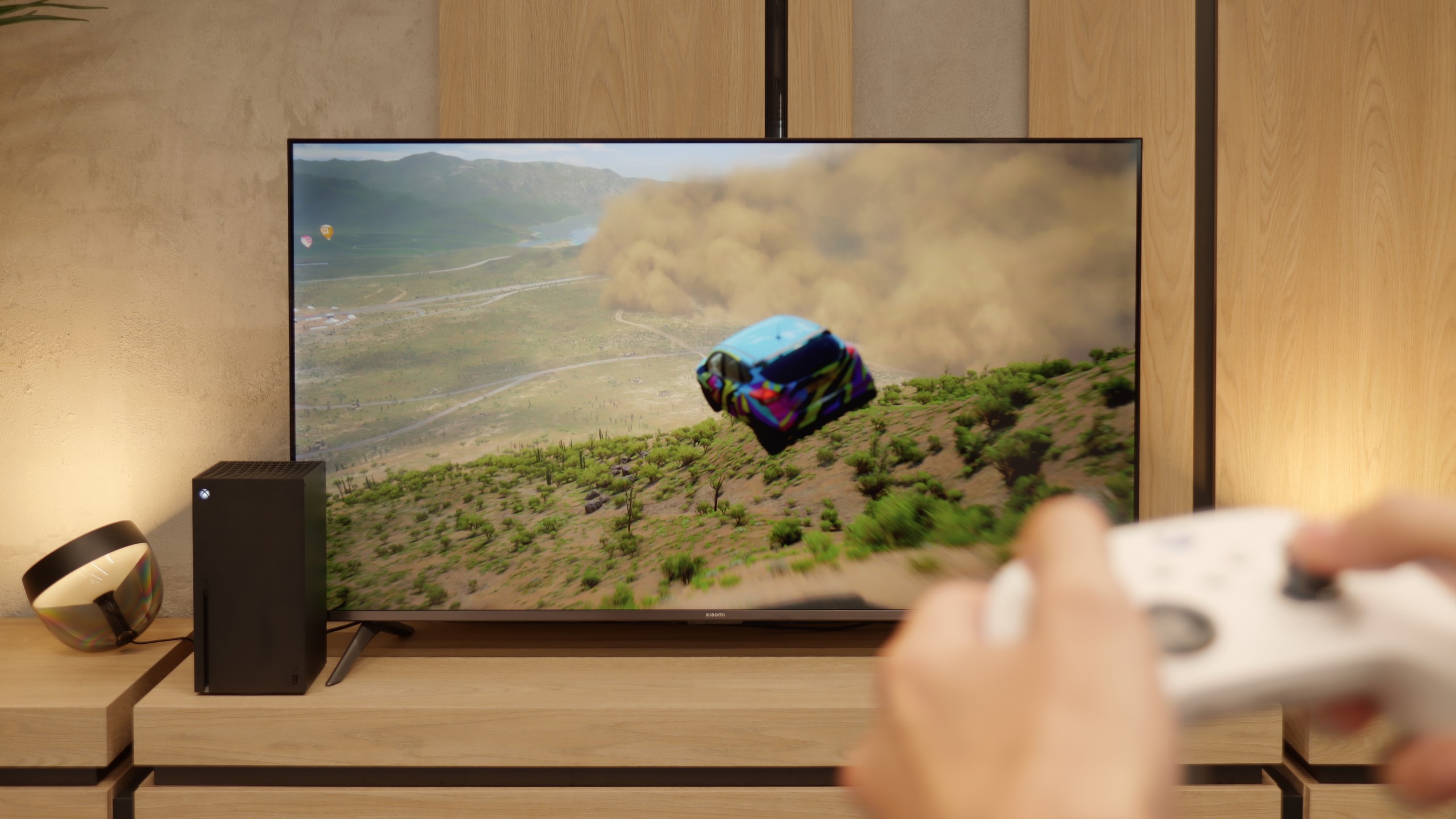
Philips PUS8079 offers only the most basic support for gaming in the form of ALLM, VRR, and Game Bar. The most important information is that thanks to the implementation of the feature responsible for dynamic refresh rate adjustment, the image is actually quite smooth for this price range and does not 'tear' the image.
A slightly greater nod towards gamers is the introduction of the Game Bar, allowing for settings adjustments 'on the fly'. This means we won’t have to exit the game to make any changes to the image. Importantly, it hasn’t been stripped of options known from higher models. We can find features such as shadow enhancement for better visibility in shadows and a colour filter for players with visual impairments.
No indeed – since Xiaomi has added the "Game Boost 120 Hz" feature here, one might expect that they'd follow up with a solid gaming package. Unfortunately, reality quickly dampens that enthusiasm. Aside from this mode (which, it must be said, is a great addition in a budget build), we only have a rather peculiar player panel. It's hard to call it a full-fledged "game bar" – it's more of a simple overlay on the TV's Menu with limited options. And that’s about it. There’s no ALLM, so the TV won’t switch to game mode automatically. There’s no VRR, so you can forget about smooth frame synchronisation. We also won’t find support for Dolby Vision in games or the HGiG format, which are increasingly becoming the standard on consoles. In short: apart from Game Boost 120 Hz, which indeed allows for a more enjoyable experience at 1080p or 1440p, Xiaomi A Pro 2026 offers nothing that particularly appeals to gamers.
Input lag
9.9/10
9.5/10
SDR
HDR
Dolby Vision
Results of input lag measurements in Philips PUS8079 stand at a high level, regardless of the signal or resolution. All gamers will undoubtedly appreciate the efforts of the manufacturer, which allow a game running at 4K60Hz with HDR to have only 13 ms of lag, which is virtually unnoticeable even in online games.
Input lag on the Xiaomi A Pro 2026 is quite decent and definitely isn't its weak point. The best results were achieved in 1080p@120 Hz and 1440p@120 Hz modes – there the TV drops below 10 ms, which can easily be called a phenomenal result and sufficient even for more demanding gamers. The situation changes with 60 Hz content – input lag then increases to around 25 ms. These might not be the best figures on the market, but for casual gaming or firing up the console in the evening, they will be fully acceptable. Especially since in most cases, it’s worth activating the 120 Hz mode, which is the most beneficial for gamers.
Compatibility with PC
2/10
2/10

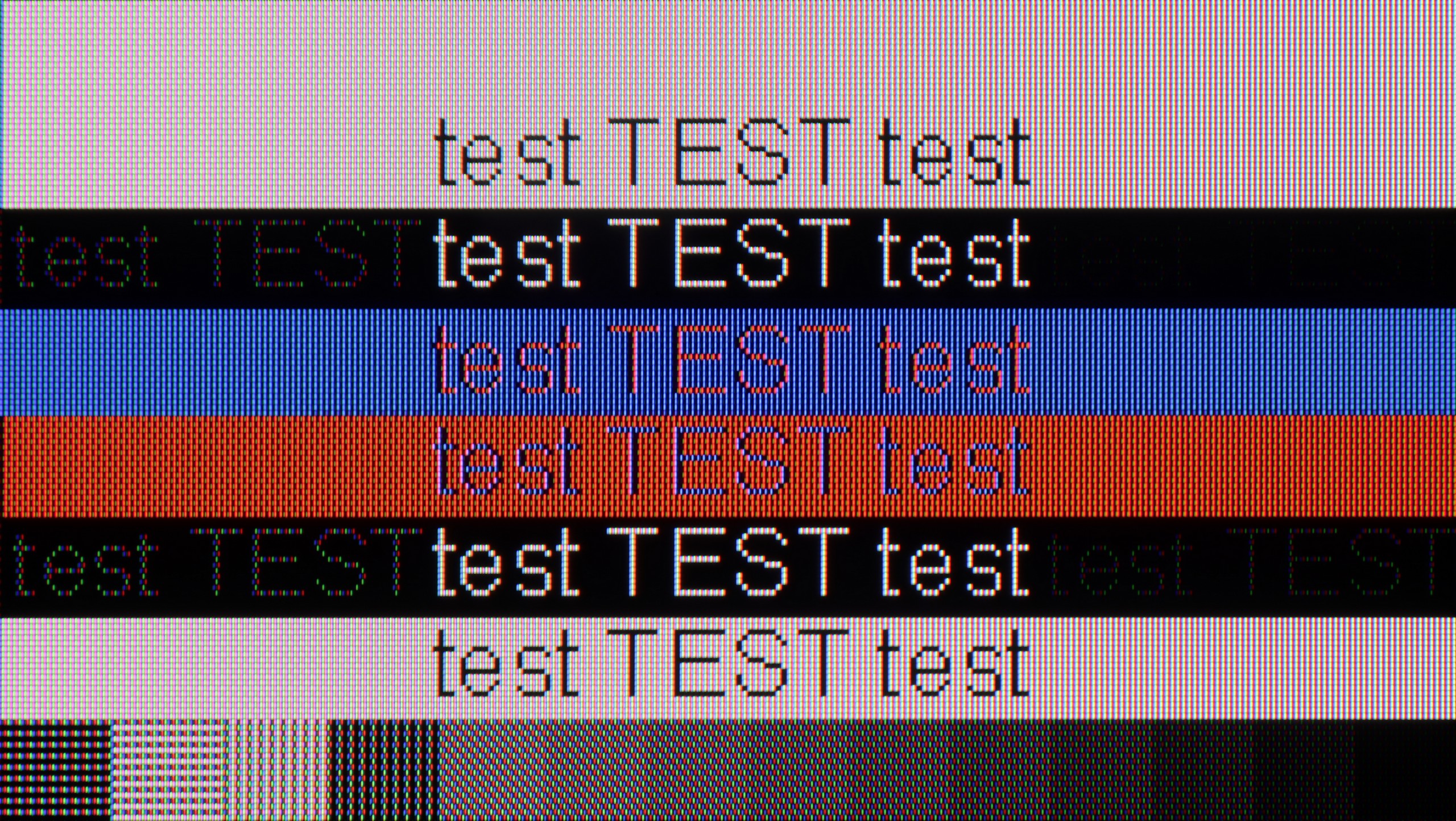
After connecting the television to the computer and wanting to use it as a monitor, we can expect a low input lag of 14 ms, which is practically unnoticeable on the mouse-screen-eye line. Unfortunately, the readability of the fonts is at a very low level, which practically excludes the use of Philips PUS8079 as a monitor. Why? If you look closely at the photo of the grey text, you'll notice a phenomenon called dithering. It is clearly visible that not all subpixels are lit up on the adjacent pixels, whereas all should be active when displaying grey. Therefore, the text will be annoyingly blurry, effectively hindering work.
Xiaomi A Pro 2026 as a computer monitor? There's no beating around the bush – it’s very poor. While you can still utilise the 120 Hz mode in lower resolutions for gaming, the TV is completely unsuitable for everyday work. It lacks full support for chroma 4:4:4, so fonts appear blurred, and sometimes even rainbow-like. Additionally, there's strong dithering, which makes the image look uneven – some pixels shine brighter while others dimmer, and vertical lines can even break apart. In practice, this means that text (especially coloured and on dark backgrounds) becomes difficult to read. Light text manages to hold up somewhat, but it’s hard to talk about any real comfort. In this category, we give the Xiaomi A Pro 2026 a score of 2/10 (+1 for the additional high refresh rate mode), and there’s really no sense in elaborating on this further.
Viewing angles
3.8/10
3/10
The biggest and most common flaw of VA panels is their viewing angles. This is particularly true for units lacking angle coatings, which would make a significant difference in this regard. Interestingly, the tested unit performed considerably better than, for example, the PML9009 we recently checked. Nevertheless, even a slight shift off-axis results in a strong degradation of colours and a drop in contrast.
The Xiaomi A Pro 2026 features a VA panel, which immediately suggests that viewing angles are not its strong suit. When looking at the screen from the side, you will quickly notice a loss of quality – colours noticeably fade, and the whole image appears washed out. The drop in brightness may not be as drastic as in some constructions based on similar technology, but that doesn’t change the fact that it’s clearly a weak point of this model. If we plan to use it as a large, cheap screen for the lounge, one must take this limitation into account.
TV efficiency during daytime
2.6/10
4.9/10




Matrix brightness
Average luminance SDR
XIAOMI A PRO 2026: 334 cd/m2
Philips PUS8079: 192 cd/m2
In our test sequence, there was also a place to check the performance of the television during daytime viewing. In fact, we also suggest this operational scenario, considering the insufficient contrast. Returning to the point: the use of a satin finish yielded poor results, which, combined with the low luminance of the television across all models, effectively disqualifies it for viewing in a sunny room.
The Xiaomi A Pro 2026 performs quite well during the day. The display has a satin finish that helps reduce reflections, so colours don’t lose their vibrancy, even when the room is bright. Just bear in mind that it’s not an extremely bright screen – the average brightness is around 350 nits. In an ordinary, moderately sunny living room, it’s sufficient, but if you have large windows that let in a lot of sunlight, it might simply be tough without blinds or curtains.
Details about the matrix
Subpixel Structure:

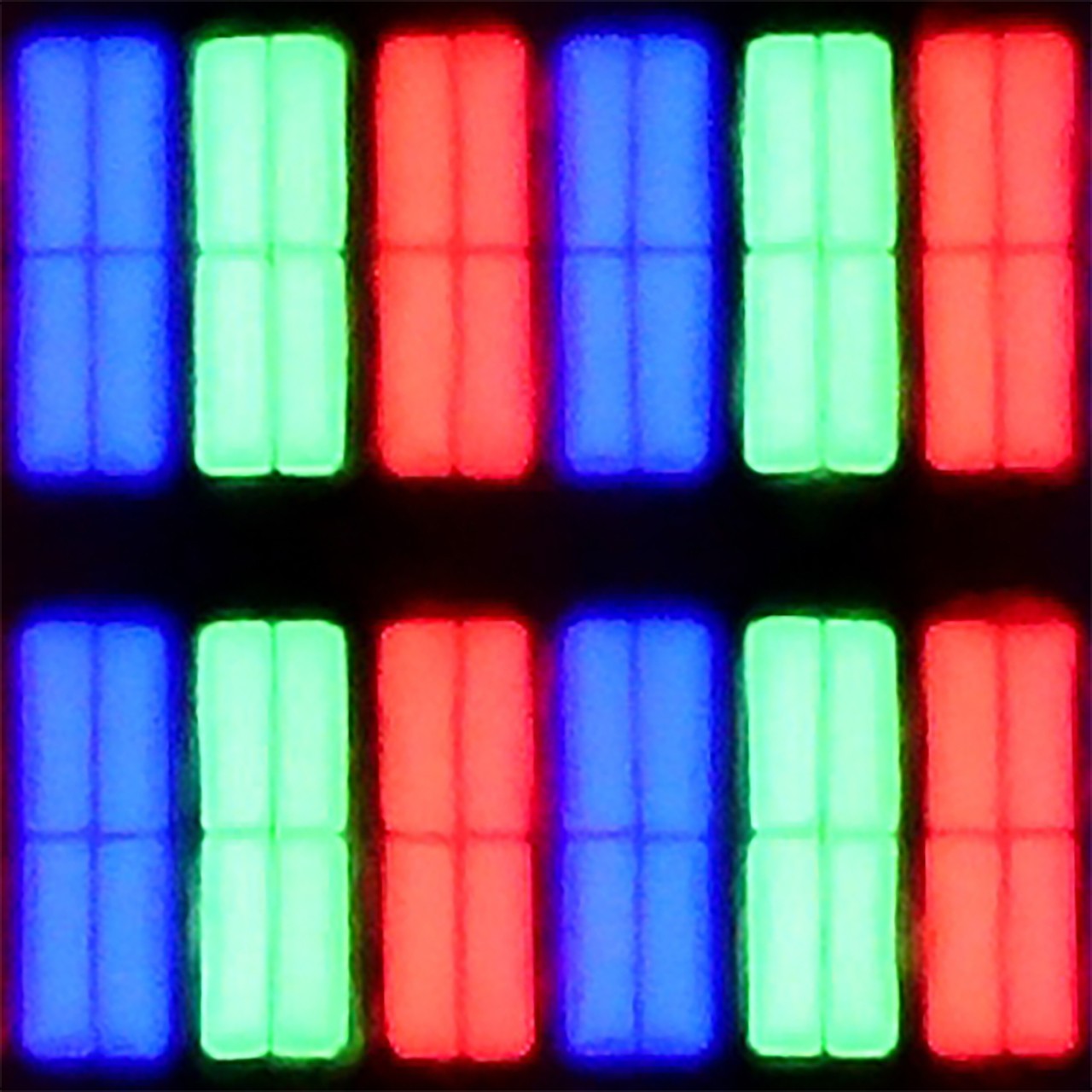
Panel uniformity and thermal imaging:


Philips PUS8079
XIAOMI A PRO 2026
TV features
4.7/10
6.1/10
- HDMI inputs3 x HDMI 2.0, 0 x HDMI 2.13 x HDMI 2.0, 0 x HDMI 2.1
- Other inputsRCA (Chinch)
- OutputseARC (HDMI), ARC (HDMI), Mini-Jack (Headphones)Toslink (Optical audio), eARC (HDMI), ARC (HDMI), Mini-Jack (Headphones)
- Network InterfacesWi-Fi 2.4GHz, Wi-Fi 5GHz, Ethernet (LAN) 100MbpsWi-Fi 2.4GHz, Wi-Fi 5GHz, Ethernet (LAN) 100Mbps
- TV receptionDVB-T, DVB-T2, DVB-S, DVB-S2, DVB-CDVB-T, DVB-T2, DVB-S, DVB-S2, DVB-C
Classic features:
- Recording to USB (terrestrial TV)
- Recording programming
- Picture in Picture (PiP)
- RF remote control (no need to aim at the screen)
- Backlit remote control
- Teletext
- Audio only mode
- Bluetooth headphones support
- Simultaneous Bluetooth headphones & TV audio
Smart features:
- AirPlay
- Screen mirroring (Windows Miracast)
- Voice search
- Voice search in native language
- Ability to connect a keyboard and mouse


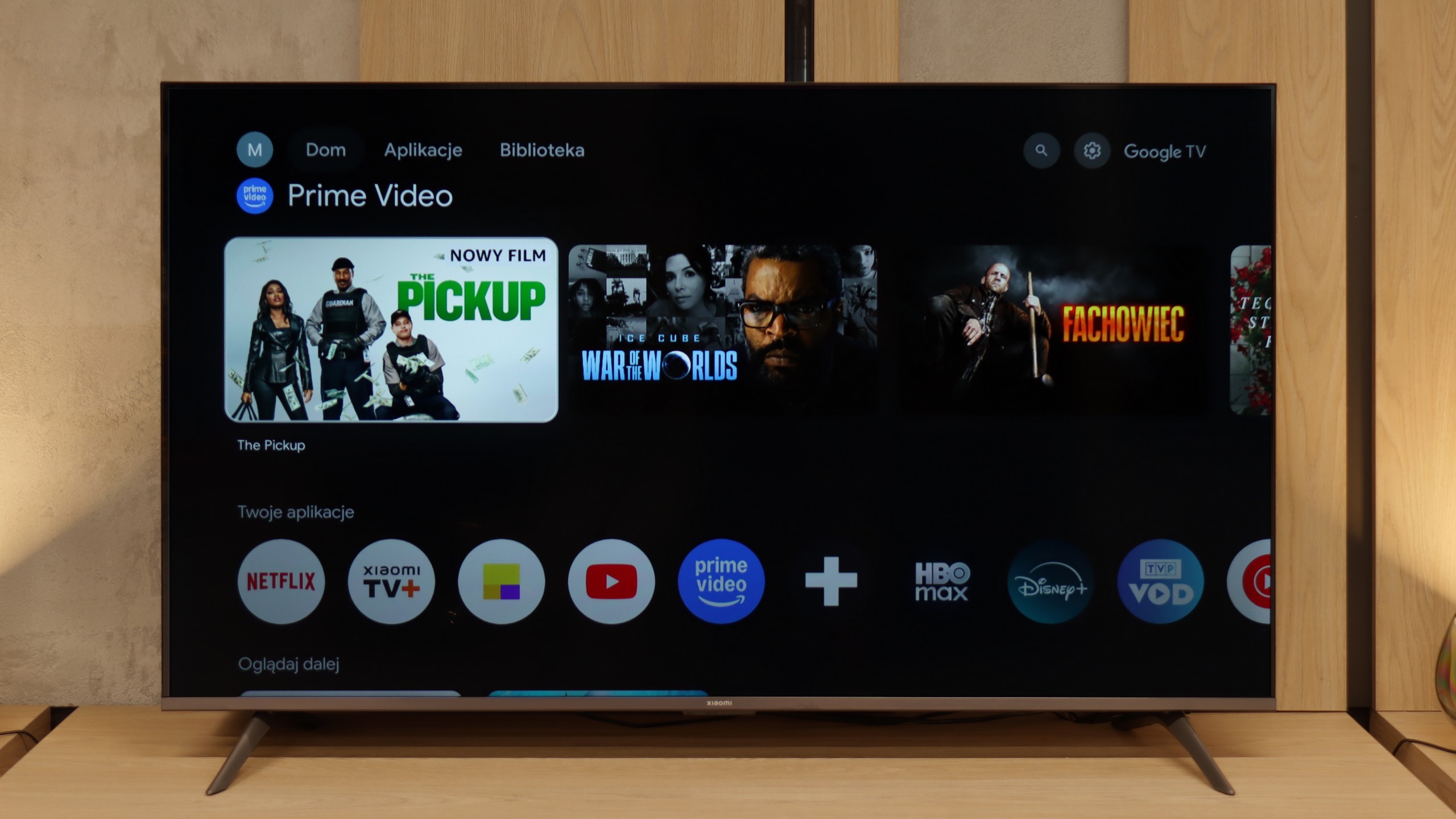
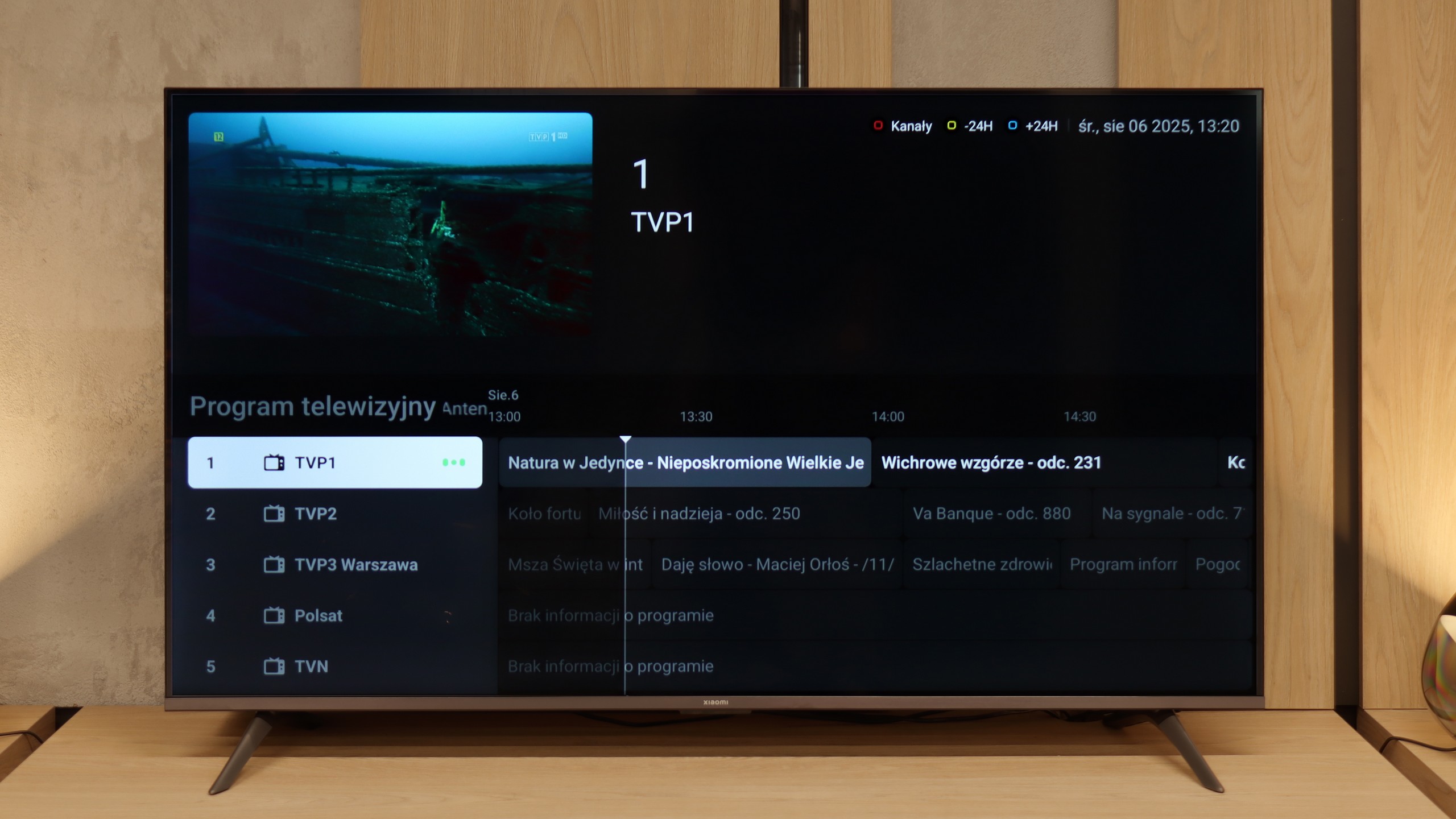
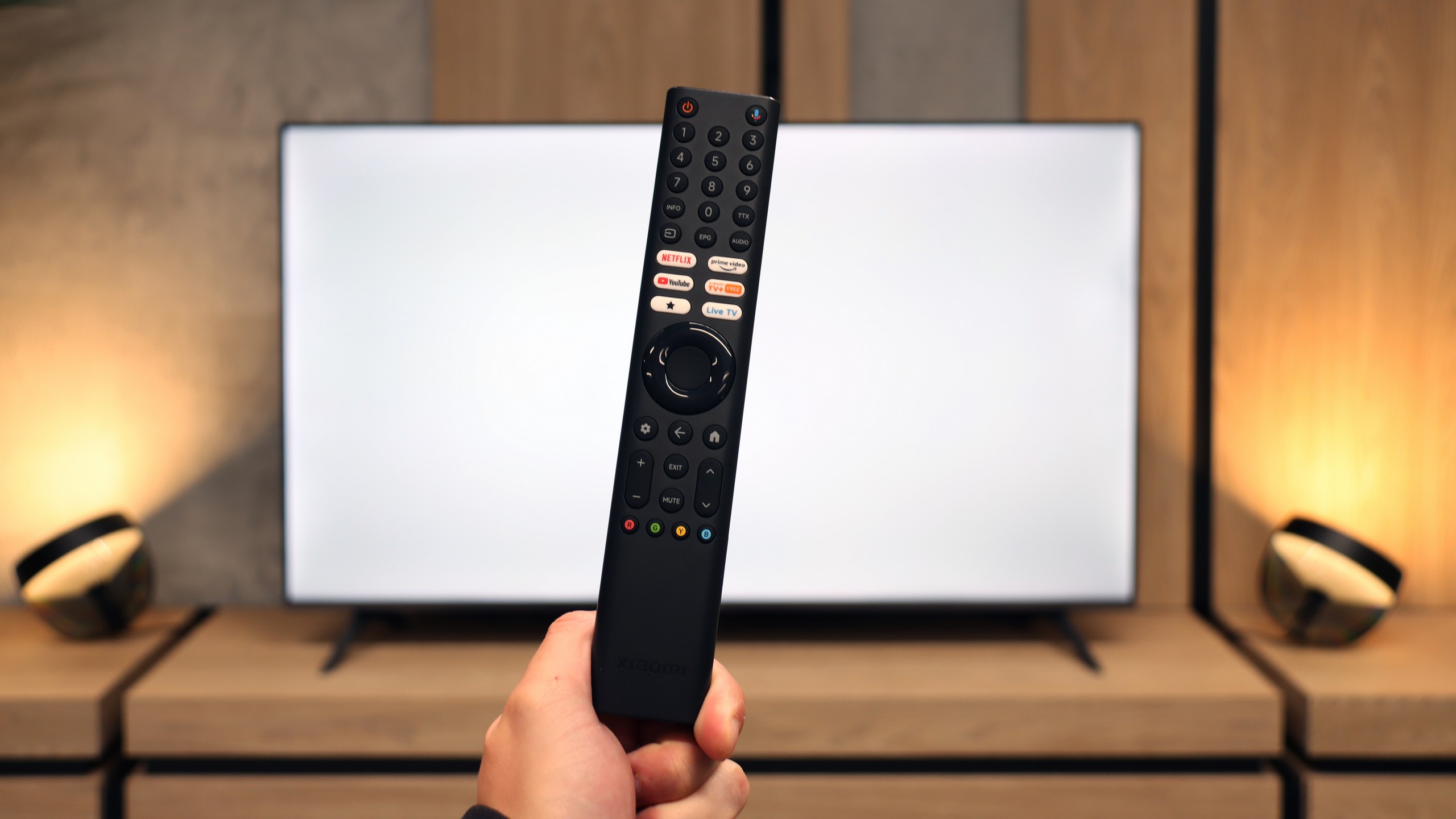
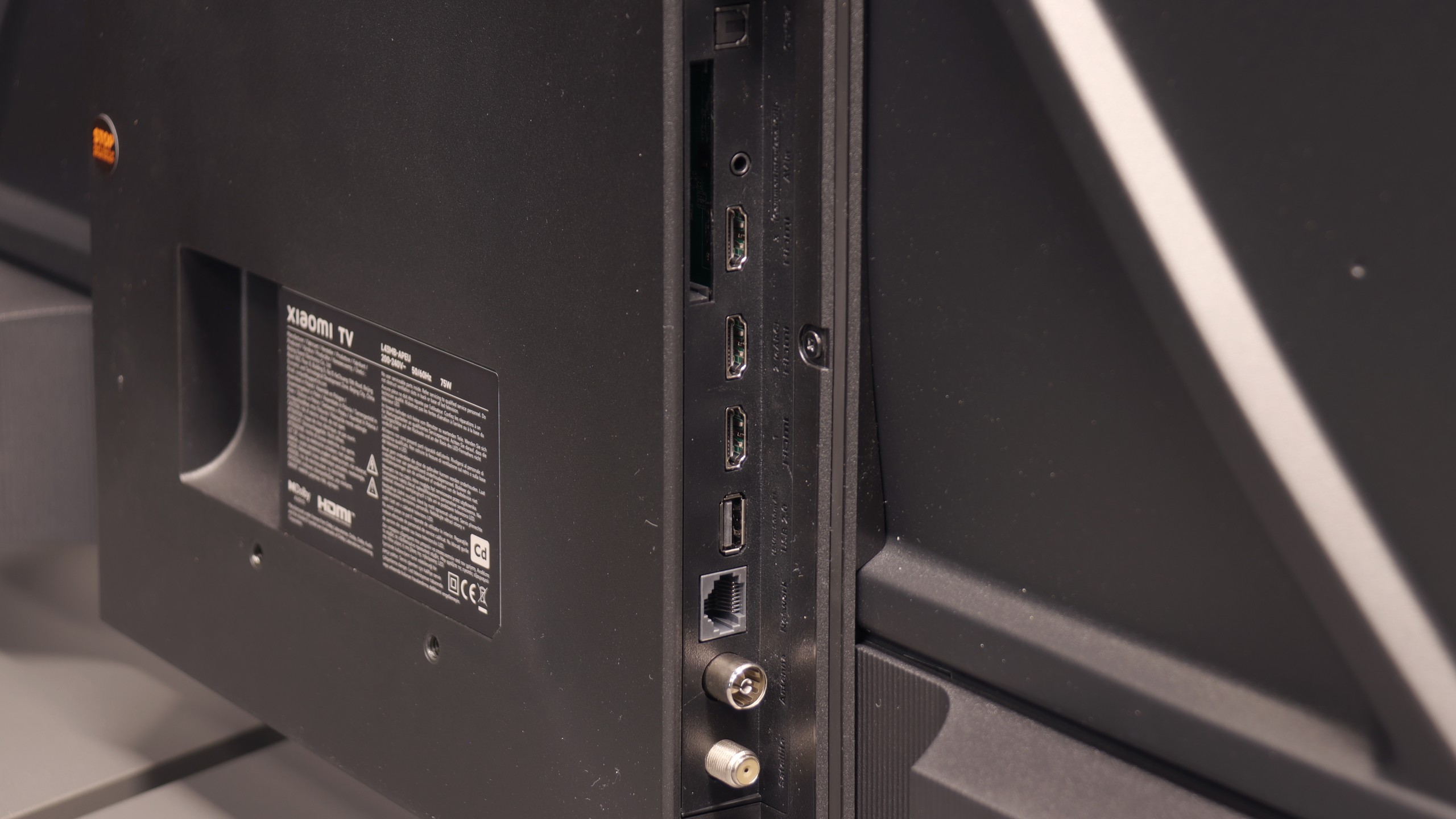
One cannot fail to mention the biggest distinguishing feature of the manufacturer's televisions. We are, of course, talking about the multicoloured Ambilight backlighting, which is placed on the back of the device and displays colours adjusted to what is happening on the screen, often allowing for an even greater immersive experience. The operating system responsible for the television's functioning is Philips' proprietary system charmingly named TitanOs. It is definitely more closed and limited in terms of application resources than the televisions from this manufacturer that are based on the GoogleTV system. Besides the lack of important applications, its closed nature also manifests itself in another way. We won't be able to do such basic things as scheduling recordings or recording to USB. Those using devices from Apple may also feel disappointed by the absence of AirPlay functionality, which allows for easy screen streaming. Fortunately, there is an option to connect a keyboard and mouse for smoother navigation through the television menu. It is worth mentioning that there is an option to connect headphones, but only wired ones. If we connect them, we can also play sound through the television's speakers. It is also worth adding that the control of the television is done over IR, rather than Bluetooth, which is quite inconvenient in these times.
In summary: TitanOs has quite a few "buts," especially when we are conscious users needing and using many streaming platforms. It is rather an option for those limiting themselves to the so-called holy trinity, namely Netflix, YouTube, and CDA.
SmartTV- Google TV
The biggest plus of the Xiaomi A Pro 2026 is the Google TV system. It gives the television a second life – you can run almost any app on it, from Netflix and YouTube to music services and even lesser-known programs from the Google Play store. We are not limited to what the manufacturer has pre-installed, as is often the case with other budget televisions. On top of that, we have AirPlay, voice search via Google Assistant, and even integration with Gemini. We did experience some small hiccups – for instance, screen mirroring from a laptop didn’t always work – but despite these shortcomings, Google TV is a huge advantage of this model.
Classic TV functions
The Xiaomi A Pro 2026 can be described as a "senior-friendly" television. The large remote with a numeric keypad and a considerable number of physical buttons makes it intuitive to operate. Support for teletext and a clear EPG interface make it easy to use classic television functions. We won’t find many advanced features like USB recording or PiP functionality, but the presence of an analogue headphone jack output can be surprisingly practical for some users. It gives the impression that this is a set of features tailored to the needs of the most traditional viewers.
System stability
However, not everything works as it should. During testing, we encountered annoying system lags, issues with Miracast, and problems when switching audio sources. There were times when a reset of the television was necessary by unplugging it from the power. This only shows that while Google TV offers enormous possibilities, the stability can still be very problematic in such a budget-friendly model.
Playing files from USB
8/10
6.8/10
Supported photo formats:
Maximum photo resolution:

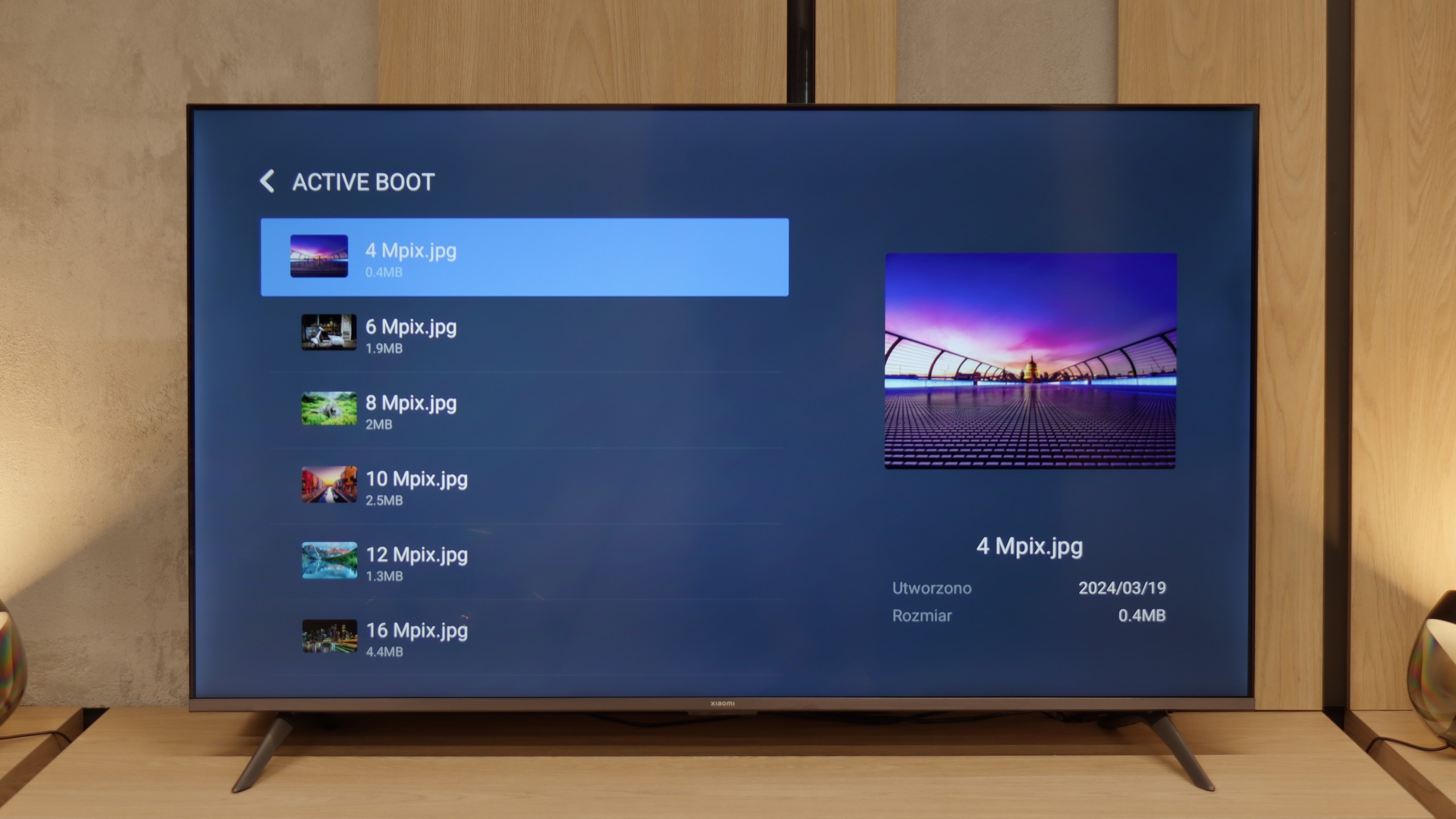
The default media player built into Philips PUS8079 offers quite a wide range of features but also has its limitations. It plays practically all video formats, with the obvious exception of Dolby Vision and the less obvious .asf, which is not commonly encountered. However, there are issues such as the lack of support for the H.265 HEVC codec at high bitrate and handling of .sub files, which are fairly popular. When it comes to photos, the player performs adequately, but it lacks support for some popular resolutions and formats, such as HEIC, used on Apple devices. The player performs best with audio, where it can't be faulted. Unfortunately, due to system limitations, there is no option to expand its features, meaning we are left with what the manufacturer has provided.
The built-in media player in the Xiaomi A Pro 2026 is quite a conundrum. On one hand, it plays most popular audio and video formats without major issues. On the other hand, it can struggle with basic things like Polish characters. Files with letters such as ą, ł, ć, or ś in the name often refuse to open or display incorrectly. It looks strange, because we supposedly have codec support, yet the TV simply gets lost on straightforward matters related to the alphabet. Fortunately, this isn’t a huge problem, as thanks to Google TV we can simply install another player, like VLC. At that point, the issue with Polish characters totally disappears and media usage becomes seamless.
Apps
6.2/10
9.6/10














































Sound
5.1/10
5/10
- Maximum volume-81dB
- Dolby Digital Plus 7.1
- Dolby True HD 7.1
- Dolby Atmos in Dolby Digital Plus (JOC)
- Dolby Atmos in Dolby True HD
- DTS:X in DTS-HD MA
- DTS-HD Master Audio
The best thing that can be said about the sound system in Philips PUS8079 is that it is present. There is practically a lack of mid-tones and bass. Meanwhile, the high tones stand out in a rather unpleasant way. Interestingly, we find a complete set of the most important audio codecs here, including Dolby Atmos and DTS-HD Master Audio. Because of this, connecting our home theatre system will be merely a formality.
Last year, the Xiaomi A Pro 2025 surprised us with its pretty decent sound for a super budget segment television. Unfortunately, this year's edition – the A Pro 2026, has completely let us down. The sound feels like it's coming from underwater: flat, lacking any bass or depth. The only positive is the wide support for audio formats like Dolby Atmos and DTS:X, but in practice, it doesn't really change much. If you're considering this television, you'll need to factor in a soundbar straight away, as the audio experience without it will be quite disappointing.
Acoustic Measurements
No acoustic data
81dBC (Max)
75dBC


